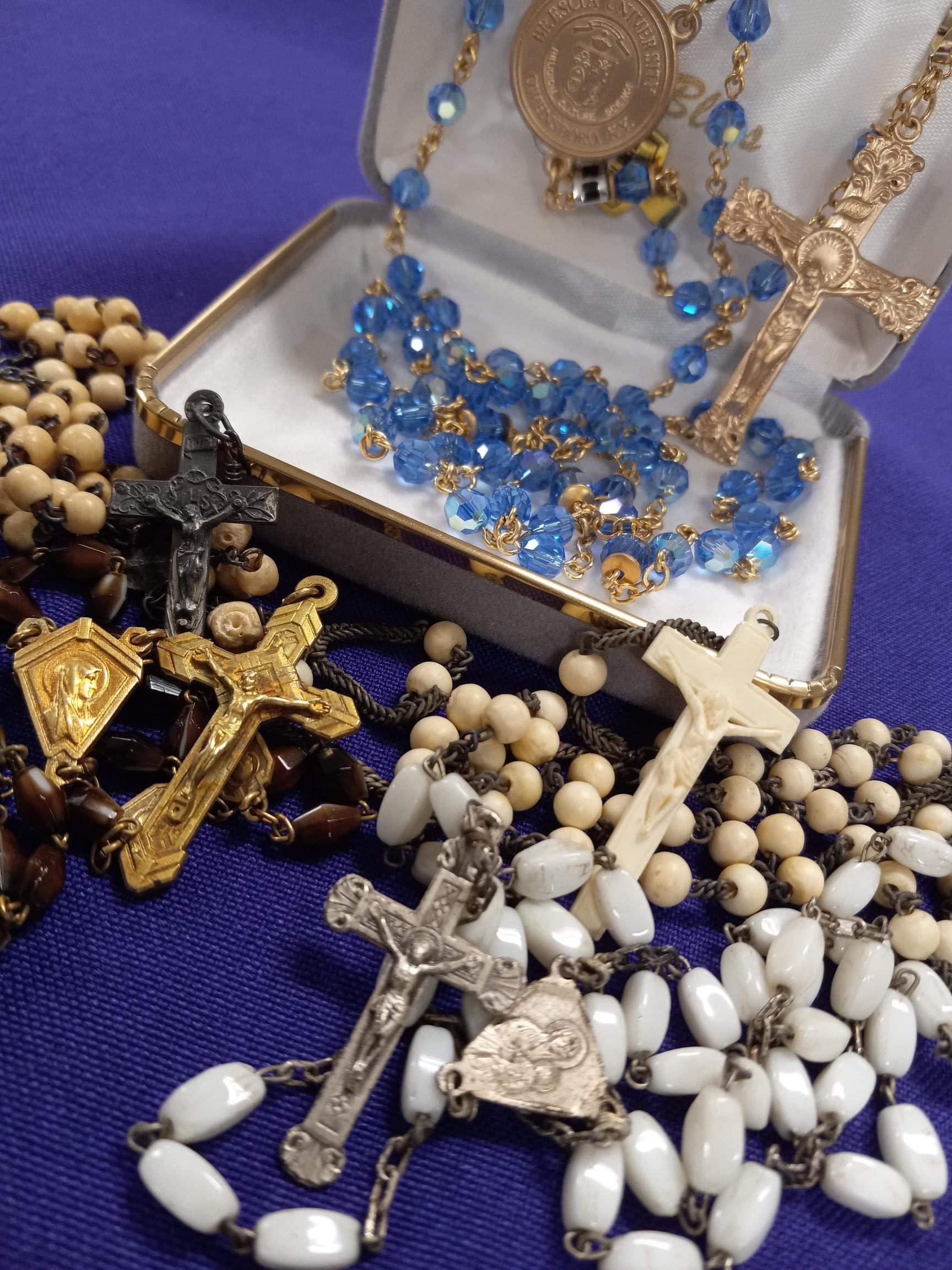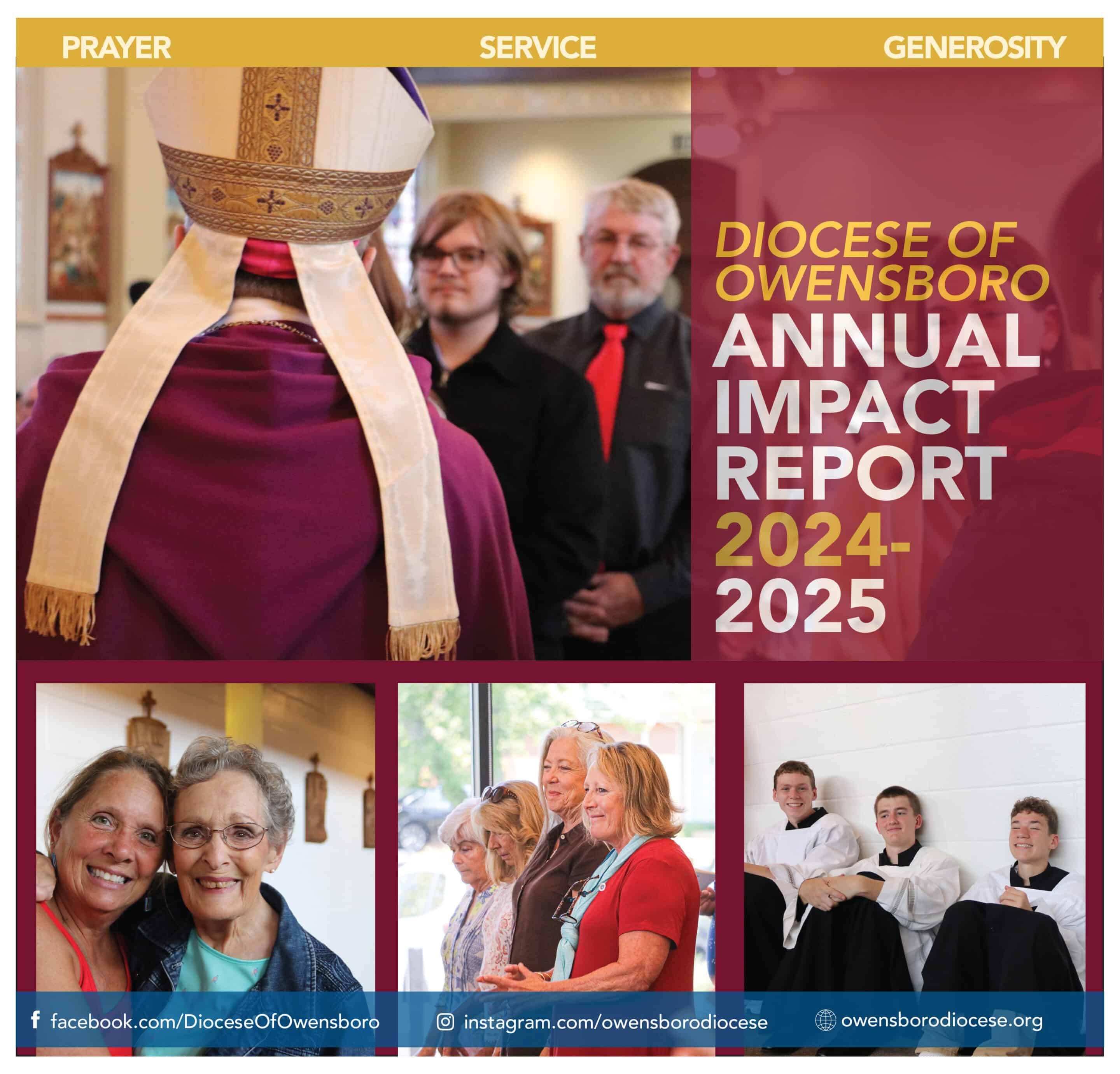
Pictured are the late Owensboro bishops’ rosaries (left to right) black crucifix, a rosary from Jerusalem (Bishop Cotton); gold crucifix, a rosary ordination gift (Bishop Cotton); silver crucifix, a gift from Pope Pius XII (Bishop Cotton); white crucifix, a gift from India (Bishop Cotton); and gold crucifix with blue beads in case, a gift from Brescia University’s Society of the Arch (Bishop McRaith). COURTESY OF ARCHIVES
The rosaries of our late bishops
BY EDWARD WILSON, ARCHIVES
October is devoted to the Most Holy Rosary. Few devotions have received the amount of powerful praise from popes and saints alike. Last October, I wrote an article on the collection of rosaries from deceased sisters at Mount Saint Joseph. This recently caused me to wonder about our previous bishops’ rosaries and the stories behind them. Surprisingly, we have quite a few and as with all items, each has a story to tell.
The archives contain many rosaries that were given as presents to our late bishops. There is a purple one that has changed color with age that is recorded to have been given as an ordination gift to Bishop Francis R. Cotton. One was sent to him as a gift from India. The most attractive of all the rosaries was given to Bishop John J. McRaith from the Society of the Arch at Brescia University. Handmade with links made of 12k gold, beads made from light blue Austrian cut crystal and a custom 12k gold Brescia University pendant that links it together, this rosary is truly eye catching. But what about Bishop Henry J. Soenneker?
We have no rosaries in the archive for Bishop Soenneker. This is not surprising as he is the bishop we have the least archival holdings on. His love for the rosary is displayed, however, in his correspondence with the prolific priest Ven. Patrick Peyton, “The Rosary Priest.” In October 1971 the bishop invited Fr. Peyton to a rosary rally. Through their correspondence Fr. Peyton declared “Your invitation is another sign that the pendulum is swinging back in (sic) behalf of our Blessed Mother and the holy Rosary.” He even wrote to the bishop the next year continuing to praise “the efficacious intervention of Our Lord and the all-powerful intercession of Our Lady.”
In 1953, Bishop Cotton took a trip to Rome. This is where the most special rosary in the bishops’ collection was acquired. There is nothing remarkable in appearance about this rosary. It is small and bone white. It is not made up of precious stones. It contains no silver or gold. However, the hand that gifted it to Bishop Cotton was the same hand that blessed it. On Oct. 16, 1953, this rosary was gifted to Bishop Cotton by Pope Pius XII and blessed upon presentation. This event truly affected the bishop and he took great pride in the gift. He was sure to record the transaction and its date. He later wrote to the archbishop of Laodicea, Archbishop Gaetano Cicognani, that the trip made him feel “much closer to the Sovereign Pontiff and the Holy See.”
We as Catholics need to embrace the rosary. We need not find a devotion to it intimidating. It is a gift of love from Our Lady. Bishop, nun, cardinal, pope or layperson, the Blessed Mother has time for us all. It should be a great consolation that when we are lowered into the ground, the rosary will be the last thing our earthly hands grip, until our heavenly hands grip the hands of Our Savior.
Edward Wilson is the director of the Diocese of Owensboro’s Archives and the Archives of the Ursuline Sisters of Mount Saint Joseph. Comments and questions may be sent to [email protected].
Originally printed in the October 2022 issue of The Western Kentucky Catholic.

